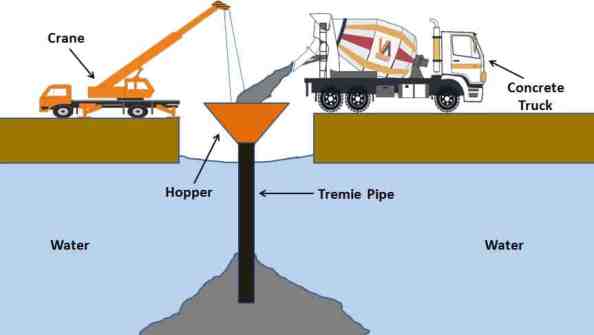Civil Engineering
-
Functions of a foundation for a building
The foundation is designed to ensure that the structural loads are transmitted to the subsoil safely, economically, and without any unacceptable movement during the construction period and throughout the anticipated life of the building or…
-
Roof of a building
The roof is an essential part of every building. Technically speaking, the roof refers to the framework of either timber, steel, or concrete on which a covering of thatch, tile, corrugated asbestos, etc is placed.…
-

Slump Test
The concrete slump test or slump cone test determines the workability or consistency of the concrete mix prepared at the laboratory or the construction site during the progress of the work. Concrete slump test is…
-
Environment impacts due to irrigation
It adds water to the soil to supply the moisture essential for the plant growth. It saves the crops from drying during short-duration droughts. It cools the soil and the atmosphere and thus makes a…
-
The main factors in the planning stage of an irrigation project
Type of project and general plan of irrigation works, Location, extent and type of irrigable lands, Irrigation requirements for profitable crop production, Available water supplies for the project, Irrigable(culturable) areas which can be economically supplied…
-
Purpose of Irrigation
Irrigation helps to grow agricultural crops, maintain landscapes and revegetate disturbed soils in dry areas and during periods of less than average rainfall or development of agriculture in desert areas. Irrigation also has other uses…
-

Advantage and Disadvantages of irrigation
Advantages For proper nourishment of crops certain amount of water is required. If rainfall is insufficient there will be deficiency in fulfilment of water requirements. Irrigation tries to remove this delicensing caused due to inadequate…
-

Purpose of adding gypsum in cement
Gypsum is a mineral that is hydrated Calcium Sulphate(CaSO4.2H2O) in chemical form. It plays an essential role in controlling the rate of hardening of cement. During cement manufacturing, a small amount of gypsum is introduced…
-

Advantages of plastics over the metals when used in civil engineering applications
Plastics have low density. They are corrosion-resistant. They are easy to manufacture and easy to make complex shapes. They can be used in electrical insulation. They have low thermal conductivity. They require low maintenance costs…
-

Under water concreting
Underwater concreting is a specialized construction technique that involves placing and curing concrete underwater. It’s used to build structures like bridges, dams, and offshore platforms. Concrete placement underwater poses several problems, as concrete cannot be…

